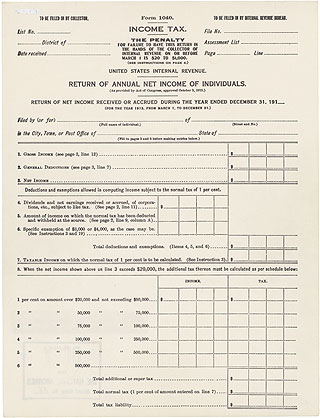It's spring! when a young man's heart turns to thoughts of...TAXES! I thought I'd cheer you up by describing what Federal Income taxes were like in 1930.
Income taxes were started in 1913, so in the 30s people dreaded tax day as much as we do. However, their tax day occurred on March 15 instead of April 15, and it probably wasn't as complex as ours.
The income tax forms back then were written on one or two pages. The second page was dedicated to Schedules A, B, C, D, E, and F. Oh, for the good old days! The accompanying instructions were written on two pages, also. They probably didn't have to pay a tax pro to help fill out the confusing forms back then.
Since this was before the time of social security, no social security numbers were on the tax forms. The income total did include other sources of income, such as bank interest as our does today.
 On the deductions side the taxpayer was able to deduct donations, insurance, and taxes paid. That was all declared on 3 lines. Pretty straight forward.
On the deductions side the taxpayer was able to deduct donations, insurance, and taxes paid. That was all declared on 3 lines. Pretty straight forward.They were able to subtract personal exemptions of $1500 for a single person and $3500 for a head of a family plus $400 per child - much like our exemptions today.
All the information was written on the first page and totaled up. The taxes were then calculated and written on the bottom line. Probably didn't take them longer than an hour to complete.
Only about one in forty-four people in the US in 1930 paid taxes and the taxes on average were 5% of income. On a per capita basis, we paid only $10.00 in income tax per person during that year.
A married man making $4000 subtracted the $3500 personal exemptions and then paid taxes on the remaining $500, which came to $2.50 for the year. In today's dollar that would be income of $54,344 and taxes of $33.97. That's why the people with an income more than $5000 (today $67,930) were the only ones who had to file their taxes back then.
A married man making $10,000 paid about $50.00 in taxes. (today = $135,860 income paying $679 taxes) Any income over $100,000 could not exceed 20% tax rate back then.
Maybe we should contact our congressmen and tell them to bring back the tax forms from 1930. It would make our lives a lot easier!
Information from this blog was taken from "A Comparison of British and U.S. Income Taxes in 1930" published in The Literary Digest for May, 24, 1930.

